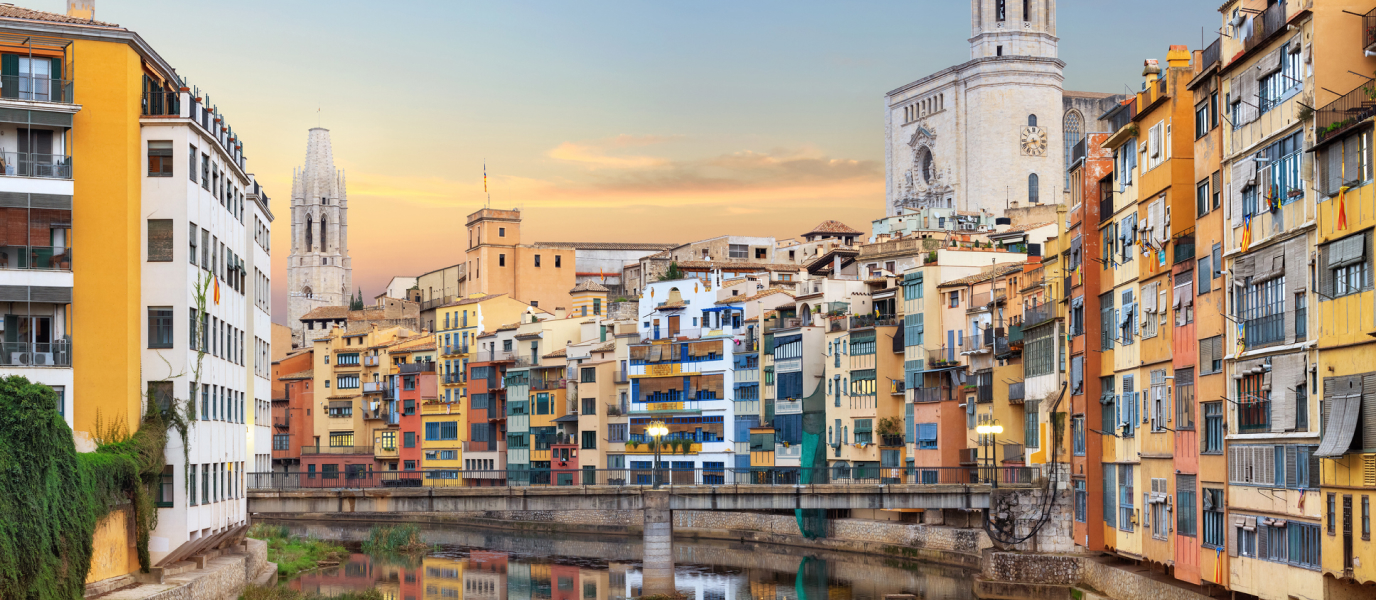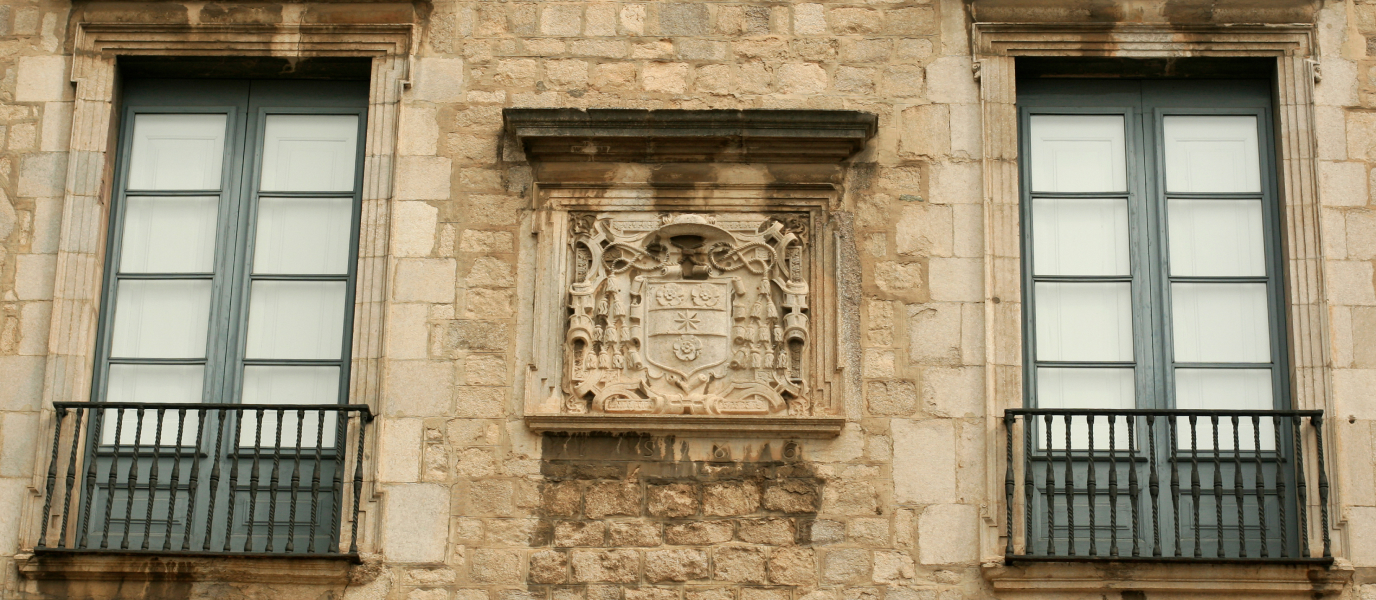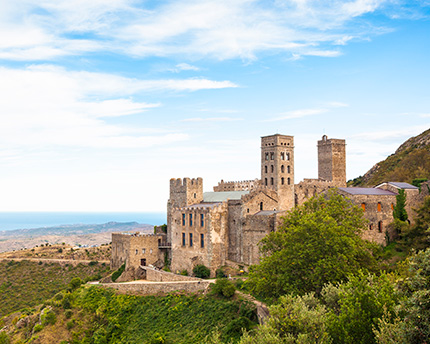The city of Girona has been made famous worldwide thanks to Game of Thrones. Several episodes of the sixth season of this legendary series were filmed in different locations of this lovely city. But, long before the arrival of the TV series, Girona was already well known for its beauty and its outstanding historical monuments. And also for the gorgeous scenery created by the rivers that cross the city: the Ter and in particular, the Oñar (Onyar). And among foodies, Girona is famous as the home of one of the world’s finest restaurants (if not the finest): El Celler de Can Roca.
What to see in Girona
Girona is the perfect city for sightseeing on foot. Thanks to both its compact size and to the peaceful atmosphere that reigns over most of the city. And, above all else, for the authentic character of its streets and squares. Many of its houses, mansions and churches have retained their medieval appearance remarkably well. These are some of the places we particularly recommend you visit in Girona:
The Arab Baths
Built in Romanesque style, they were used as public baths between the eleventh and fifteenth centuries, following the traditional use of these kinds of facilities by the Romans, Muslims and Jews.
Girona’s bridges
The most picturesque of Girona’s bridges is probably Les Peixateries Velles or Eiffel bridge, as it was built by the company belonging to the famous French engineer.
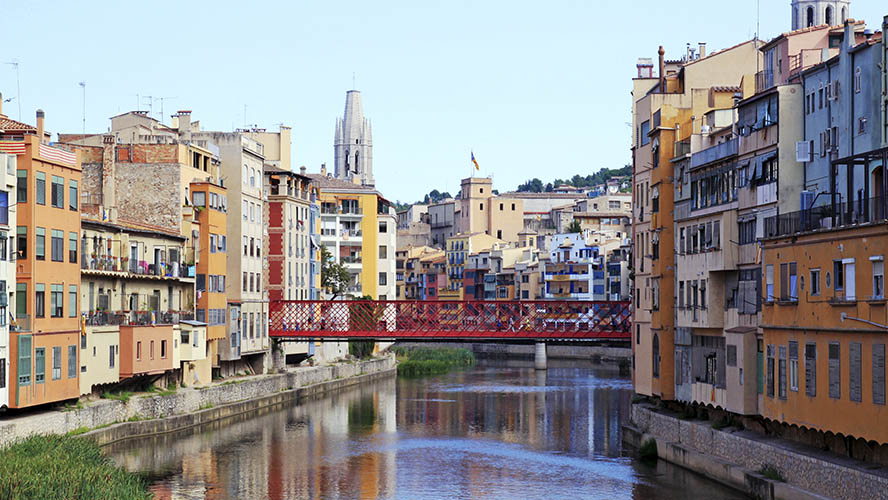
Casas del Oñar
Together with the Cathedral and the tower of the Sant Feliu basilica, these brightly-coloured houses built on the banks of the Oñar are one of the most emblematic images of the city. They were built over the course of the twentieth century.
Girona’s Cathedral
But if there is one monument that outshines all the others in Girona, it is the Cathedral. Its huge staircase commands the attention of visitors before they have even stepped inside. This, of course, was the setting for one of the best-known scenes from the Game of Thrones series.
The Cathedral was built between the eleventh and eighteenth centuries, although a significant portion dates from the fourteenth century. At that time, the refurbishment of the building was undertaken by the architect Guillermo Bofill, who oversaw the construction of a unique and impressively lofty nave.
Just as impressive as the cathedral itself is the twelfth-century cloister. Its outstanding feature is its irregular floor plan and its richly decorated capitals. Unusually for the Romanesque style, the capitals depict scenes carved by master craftsmen during the construction of the cathedral.
Also of great significance is the Torre de Carlomagno [Charlemagne Tower], which was the bell tower of the Romanesque church. Originally built in the Lombard style, it became, during the Gothic renovation, one of the buttresses that support the cathedral’s nave.
So, make the effort to climb the 90 steps to admire the Cathedral’s remarkable Baroque façade, and go into the museum to see the unique, eleventh-century, Romanesque tapestry of the Creation. Moreover, the Cathedral’s Gothic nave is said to be the widest in the world. Make sure you don’t miss the unique details that make the cloister, the high altar and the chapels so special.
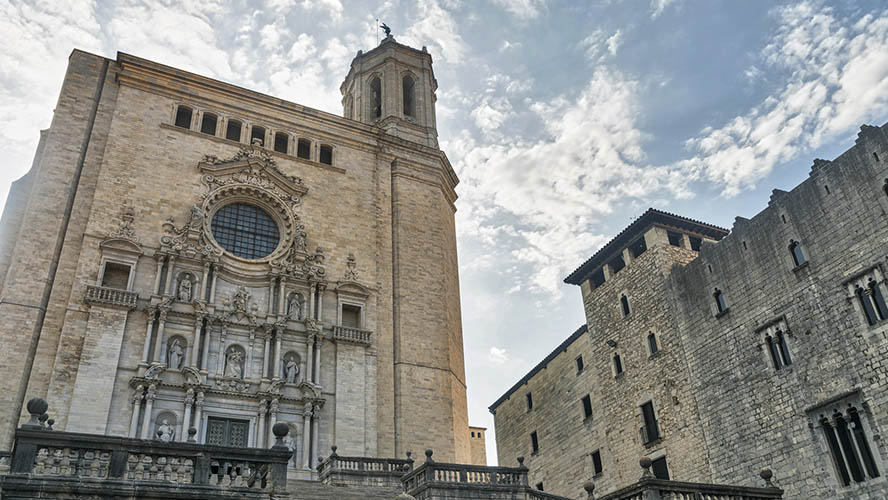
Church of Sant Feliu
A magnificent church, a product of both the Romanesque and Gothic styles, whose outstanding feature is its slim bell-tower. The church also has an interesting eighteenth-century Baroque doorway.
El Call
This is the Jewish quarter, a veritable labyrinth of narrow streets and tiny squares that have retained their medieval character. It is considered to be one of the best-preserved Jewish quarters in the world.
The City Walls
In the Middle Ages, the existing Roman walls were extended. Nowadays, a stroll around the perimeter of the walls is among the most pleasant experiences Girona can offer.
Portal de Sobreportes
This is the name of the northern entrance in the Roman walls. The side that overlooks the cathedral is topped by a statue of the Virgin to which, during the Middle Ages, prisoners prayed before being executed. On the other side are two cylindrical towers dating from the fourteenth century.
Sant Pere de Galligants
This is a former Benedictine monastery, dating from the twelfth century, which retains its beautiful church and cloister. Together with the nearby chapel of San Nicolau, it makes up one of Catalonia’s most splendid Romanesque complexes.
Pujada de Sant Domènec
This amazing, tiered street in the Old Town is part of one of Girona’s loveliest spots. Its neighbours are the Renaissance Palace of Calemany, the Palacio de los Agullana and the Baroque-Neoclassical church of Sant Martí Sacosta. Several scenes from the film ‘Perfume: the Story of a Murderer’, directed by the German actor-director, Tom Tykwer, were filmed here.
Archaeological Museum of Catalonia
Located at no. 8, Carrer de Santa Llúcia, this museum was founded in 1846, making it one of Catalonia’s oldest museums. Exhibits include archaeological artefacts discovered during the excavation of several settlements within the Girona area (particularly Empúries and the city of Girona itself) dating from prehistory up to the Middle Ages.
This museum was housed in a series of locations until, in 1857, it found a home at the monastery of Sant Pere de Galligants, in the space between the church and the Romanesque cloister. During the second half of the nineteenth century, it also occupied the area above the cloister.
Girona Art Museum
Girona Art Museum was established in 1976 in the former Episcopal Palace, and was the result of the amalgamation of two important collections: those of the Diocesan Museum of Girona and of the Provincial Museum of Antiquities and Fine Arts.
This museum also manages the estate of the Antiguo Hospital de Santa Catalina, which contains one of Europe’s best-preserved hospital pharmacies. It houses, for example, a collection of over 300 glazed ceramic jars, dating from between the seventeenth and eighteenth centuries, as well as pestles, blown glass flasks and wooden containers. It also has a library of numerous medical treatises dating from the Middle Ages to the mid-twentieth century.
La Devesa Gardens
The La Devesa Gardens (or park) are an extensive public space located at the confluence of the rivers Ter, Oñar and Güell, very close to Girona’s historic quarter (barely a ten-minute walk away). It contains over 2,500 listed trees aged over a hundred years — the majority planted in 1850 — and is the city’s largest green space.
The park is spread over a square area of planted avenues which contain various buildings — the twin booths that welcome visitors at one of its entrances; the sports facilities at what is known as the Campo de Marte; the municipal football pitch; the Fira de Giron convention centre; the Auditorium and the city’s Conference Centre.
What else can you do in Girona?
Beyond the historic quarter (Força Vella), it is also worth taking a walk along the Rambla de la Libertad, an avenue that runs parallel to the the river Oñar. This is where many of the city’s shops are concentrated, along with bars and restaurants. You will also find Casa Norat, built in 1912 in an attractive Spanish Modernist style. It is the work of Roca i Pinet.
This is also where you will find the Rocambolesc ice cream parlour, at no. 50, Santa Clara, Jordi Roca’s sweet project to recapture the memory of the ‘ice cream cart’. The creativity at work in this heaven on Earth goes far beyond strawberry, cream, chocolate and vanilla, and seems to have no limits.
Also worth a visit are:
- The Museum of Jewish History, which houses a retrospective of the presence of the Jewish community in Catalonia, and particularly in Girona. Its most noteworthy pieces include a collection of medieval tombstones from the Jewish cemetery at Montjuïc.
- Casa Masó: is the only one of the so-called Oñar houses that is open to the public, and is the birthplace of the architect Rafael Masó i Valentí. This is one of the finest examples of the Catalan Novecentismo cultural movement.
- Girona’s night life: though a peaceful city, Girona’s night life, particularly during good weather, is most entertaining. The favourite haunts of locals during the evening are the Plaza de la Independencia and the Plaza de San Feliu.
- The Temps de Flors festival: In mid May, Girona celebrates one of its most colourful festivals. It is worth visiting Girona during the 10 days every year that the streets, squares, courtyards and buildings of the old town are covered in flowers, bringing a splash of colour to the city. Emblematic spaces such as the Cathedral, the Arab Baths, the City Walls, the Pujada de Sant Domènec and the Monastery of Sant Pere de Galligans bedecked with flowers are a sight to behold.
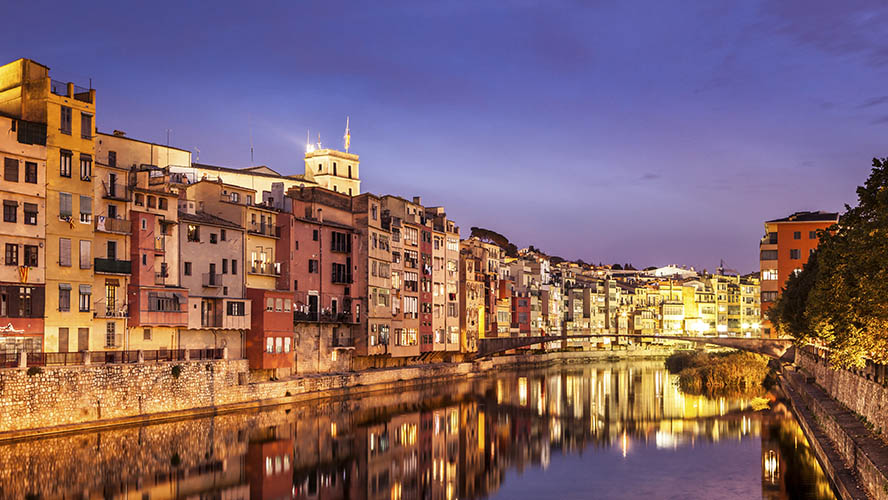
Nearby attractions
A selection of the nearest towns and attractions worth visiting on a day trip from Girona:
Figueres
Inland, the town of Figueres is strongly linked to its most famous son: Salvador Dalí. Here, in what was formerly the town’s auditorium, is his Theatre-Museum, a cultural institution created and cared for by the artist for decades which offers a complete, and always surprising, immersion in his ingenious creative universe.
While in Figueres, you should also visit attractions such as the fourteenth-century Gothic church of San Pere in the town centre, the eighteenth-century castle of Sant Ferran and the Catalonia Toy Museum — and it is worth taking a stroll along the Rambla, lined with lovely Modernist-style buildings.
Cadaqués
Cadaqués, and to be precise, Port Lligat, also have links with Salvador Dalí, who enjoyed the best years of his life here. Through his home (now a museum) passed some of the twentieth century’s greatest artists and intellectuals, both Spanish and international.
Otherwise, Cadaqués is a seafaring town that preserves its little whitewashed houses overlooking one of the most beautiful of Catalonia’s Mediterranean bays. Further inland, the labyrinthine layout of the town’s historic quarter is crowned by the church of Santa María. The viewing point next to the church is, without a doubt, one of the best spots from which to capture the always magical spirit of this town on the Caba de Creus peninsula.
Calella de Palafrugell
Apart from its coastal scenery, the most attractive aspect of Calella de Palafrugell is the rocky coves that enclose it — a place where you can enjoy an authentic Mediterranean experience. This explains why, over the last few decades, this town has become one of the great tourist meccas of the Costa Brava.
Once in Calella, it is worth going to the Cap Roig town centre and taking a relaxing stroll around its Botanical Gardens. This is the base for one of Catalonia’s best-known summer music festivals. Equally worth visiting is the coastal parish of Llafranc — without question one of the most photogenic places in the Girona-Ampurán area.
Roses
This town, very close to Cadaqués, is considered to be the gateway to the Cabo de Creus peninsula and its natural and historic wealth (such as the eleventh-century Monastery of Sant Pedro de Rodas).
Roses (or Rosas) is known for its beaches and coves, as well as for its gastronomy supplied by one of the area’s main fishing ports, with langoustines being the star product. Its fish auction is a truly spectacular affair.
We also recommend having a look at the Ciudadela (citadel), Trindad Castle, the seafront promenade and Almadraba beach. Adventurous visitors can also undertake a hike along the Camino de Ronda footpath which, in the past, linked the area’s coastal settlements.
Pals and Begur
Barely 6 kilometres apart, these villages are two of Catalonia’s best examples of medieval culture and architecture. In fact, their well-cared-for historic quarters have preserved the remains of that distant age so well that they are often used as the location for films and TV series with historic or legendary themes.
In addition, both villages have equally attractive coastal resorts. For example, Gran de Pals beach is one of the Costa Brava’s longest stretches of sand — 1.4 kilometres.
Where to eat in Girona
There are lots of restaurants in Girona, so you can find a place that appeals to you and that suits your budget and your tastes. The city, in any case, is ready to entertain visitors with its culinary delights. Any recommendations? If you’d like to make an occasion of it, book a table at El Celler de Can Roca, but you’ll also be more than satisfied if you head for Divinum, a ground-breaking, innovative restaurant in Girona’s historic quarter. Another highly recommended option is Terram which, as its name suggests, pays homage to the land. And its chef, Adrià Bou, does so with an impressive zeal on each of his three tasting menus.
El Celler de Can Roca.
You cannot talk about Girona without mentioning its most iconic restaurant. El Celler de Can Roca. The small restaurant run by the parents of the three Roca brothers has nothing in common with the modern El Celler, unquestionably one of the world’s finest restaurants.
Joan heads up a creative kitchen that reveres local produce, but which also tries out flavours and culinary techniques from all over the world. Josep is responsible for pairing the food with the wines and liquors in what must be one of the world’s most enviable wine cellars.
The youngest of the brothers, Jordi has, for decades, been surprising guests with a dessert menu that, on its own, would justify a visit to this veritable shrine to haute cuisine.





























































